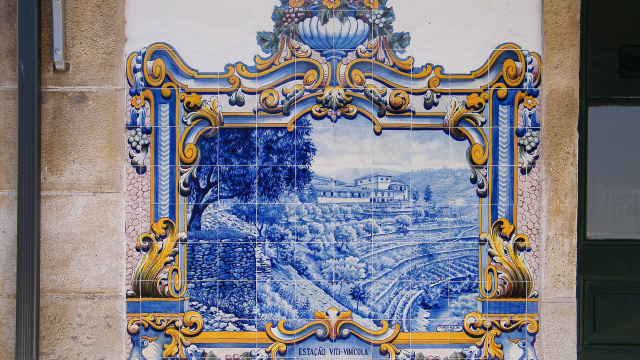Douro Valley Trip to Pinhão by Train

Pinhão Train Station Azulejos
As you disembark in Pinhão, take a moment to marvel at the stunning azulejos - traditional blue and white ceramic tiles - that decorate the station. These 24 panels depict the Douro landscapes and aspects of Port wine production from the last century, telling a story of the region’s rich wine culture. We invite you to immerse yourself in this living museum of the Douro Valley's history and tradition.
The first azulejos panels transport you through the picturesque landscapes of the Douro Valley. As your eyes drift from one tile to the next, you traverse terraced vineyards that appear to climb up to the heavens, painted in a mosaic of green and gold hues. There's a depiction of the winding Douro River, reflecting the azure sky above, with traditional rabelo boats floating gently, laden with barrels of wine. Olive and almond trees dot the landscape, representing the region's agricultural bounty. Old stone bridges arch gracefully over the water, connecting villages where time seems to stand still. Each panel is a window, capturing a moment in time, a snapshot of the Douro's breathtaking beauty.
Transitioning to the next panels, the azulejos dive deep into the heart of port wine production, a craft refined over centuries. One can see workers toiling under the sun, tending to the grapevines, ensuring each cluster ripens to perfection. There's a depiction of the age-old tradition of grape stomping, where men and women dance upon the harvest in large granite tanks called lagares. The fermentation process is beautifully illustrated, capturing the magic that turns grapes into the cherished Port wine. Each tile tells a tale of hard work, tradition, and the love for a craft that has made the Douro Valley renowned worldwide.



















